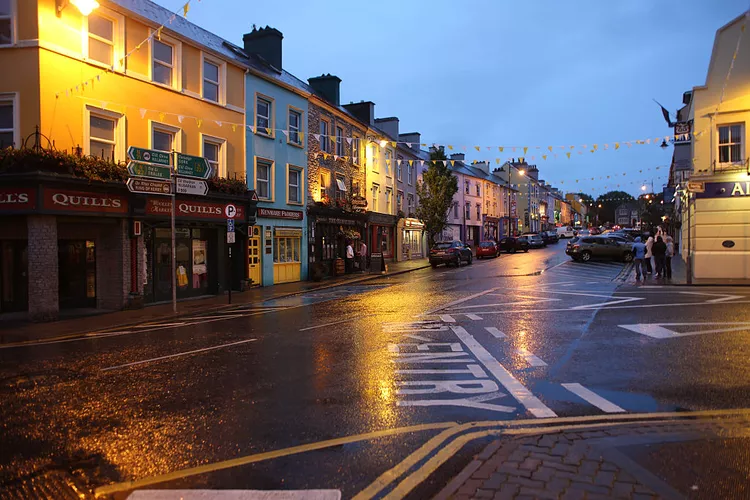1. Introduction
Discover the significance of county towns in Ireland and why they serve as key stops for travelers. Learn what amenities and features make these towns essential for your visit.
2. Understanding County Towns
Get insight into what county towns are, their historical context, and how they vary between the UK and Ireland.
3. Amenities in County Towns
Explore the typical offerings of county towns in Ireland, providing valuable resources to both locals and tourists.
4. List of County Towns
Access a comprehensive list of county towns in Ireland, aiding in your travel planning.
5. Dublin’s Status
Learn about the evolution of Dublin’s administrative status and its current county structure.
Most tourists will arrive at Dublin Airport and know where to head first – luggage carousel, immigration, car rental. Then off into the wide, green yonder. But, where should you head first when you actually are at (or at least near) your destination, maybe even before checking into your hotel or holiday home?
Well, we’d recommend a stop in the nearest county town. That’s where it’s at and where you will find what you need. In most cases, there’s even a McDonald’s to keep those pesky kids quiet on the first day.
What Actually Is a County Town
The term “county town” generally refers to a county’s administrative center, often actually the largest town in the county. County towns are found all over the United Kingdom and Ireland.
Their special status usually comes from the administrative or judicial institutions that are based in the town, including local planning offices, social welfare offices, hospitals, courts, and vital services such as the Registrar of Births, Deaths, and Marriages. Over the centuries, this will make the town the focal point of a county—the center of attention, so to speak.
However, in the UK more than in Ireland, the old concept of the county town as the seat of county administration (often in a more or less glamorous “county hall”) has become diluted. Many reforms have moved the administration to another town, often with civil servants kicking and screaming. Consequently, some county towns have regressed to rural backwaters.
Simply because the people did not go there anymore…
:max_bytes(150000):strip_icc():format(webp)/GettyImages-884086006-5c4225ed46e0fb00011d8a8c.jpg)
What You Can Expect to Find in a County Town
Any county town in Ireland will usually have the following:
- Offices of local authorities and court buildings, most of which are of minimal interest to the tourist (except maybe from an architectural or historical perspective).
- Tourist information offices with loads of brochures and often reservation services.
- A library, always a reliable source of information, even in our mega-digital age.
- A hospital; though this is on the decline, you will certainly find doctors, dentists, and pharmacies.
- A station of the Garda Siochana, or Police Service of Northern Ireland.
- Shopping facilities ranging from Aldi to artisan food, with anything from shoes to books in-between.
- Petrol stations and garages.
Therefore, the county town serves as a one-stop location for anything anyone traveling through Ireland might need— as it is for the local population.
A List of the County Towns in Ireland
Without further ado, here are the county towns of Ireland as of 2015:
- County Antrim – the county town is Antrim;
- County Armagh – the county town is the City of Armagh;
- County Carlow – the county town is Carlow;
- County Cavan – the county town is Cavan;
- County Clare – the county town is Ennis;
- County Cork – the county town is Cork City;
- County Derry (also known as County Londonderry) – the county town is Coleraine;
- County Donegal – the county town is Lifford (but both Donegal Town and, to a much larger extent, Letterkenny are local centers);
- County Down – the county town is Downpatrick;
- County Fermanagh – the county town is Enniskillen;
- County Galway – the county town is Galway City;
- County Kerry – the county town is Tralee;
- County Kildare – the county town is Naas;
- County Kilkenny – the county town is Kilkenny;
- County Laois – the county town is Portlaoise;
- County Leitrim – the county town is Carrick-on-Shannon;
- County Limerick – the county town is Limerick City;
- County Longford – the county town is Longford;
- County Louth – the county town is Dundalk;
- County Mayo – the county town is Castlebar;
- County Meath – the county town is Navan (it used to be Trim);
- County Monaghan – the county town is Monaghan;
- County Offaly – the county town is Tullamore;
- County Roscommon – the county town is Roscommon;
- County Sligo – the county town is Sligo;
- County Tipperary – the county town is Nenagh;
- Tyrone – the county town is Omagh;
- County Waterford – the county town is Dungarvan;
- County Westmeath – the county town is Mullingar;
- County Wexford – the county town is Wexford;
- County Wicklow – the county town is Wicklow.
:max_bytes(150000):strip_icc():format(webp)/GettyImages-901304056-5c422786c9e77c0001dce079.jpg)
Dublin’s Status
Originally, the county town of County Dublin would have been Dublin City – but there is no County Dublin anymore. Instead, the old entity has been split into four:
- Dublin City;
- Dún Laoghaire and Rathdown with Dún Laoghaire as “county town”;
- Fingal County with Swords as “county town”;
- South Dublin with Tallaght as “county town”.




